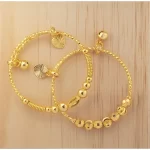Introduction to Lip Ring Jewelry
Lip ring jewelry has evolved from a niche body modification practice into a bold, mainstream fashion statement. These accessories, designed for placement in or around the lips, blend aesthetics with self-expression, offering wearers a unique way to redefine their style. Ranging from subtle labret studs to dramatic vertical bars, lip ring jewelry caters to diverse tastes while prioritizing comfort and safety.
Rooted in ancient cultural traditions—such as the lip plates of indigenous African tribes—modern designs now emphasize versatility, with materials like surgical steel, titanium, and gold ensuring hypoallergenic durability. Beyond aesthetics, proper selection involves understanding piercing anatomy, healing processes, and aftercare to avoid complications.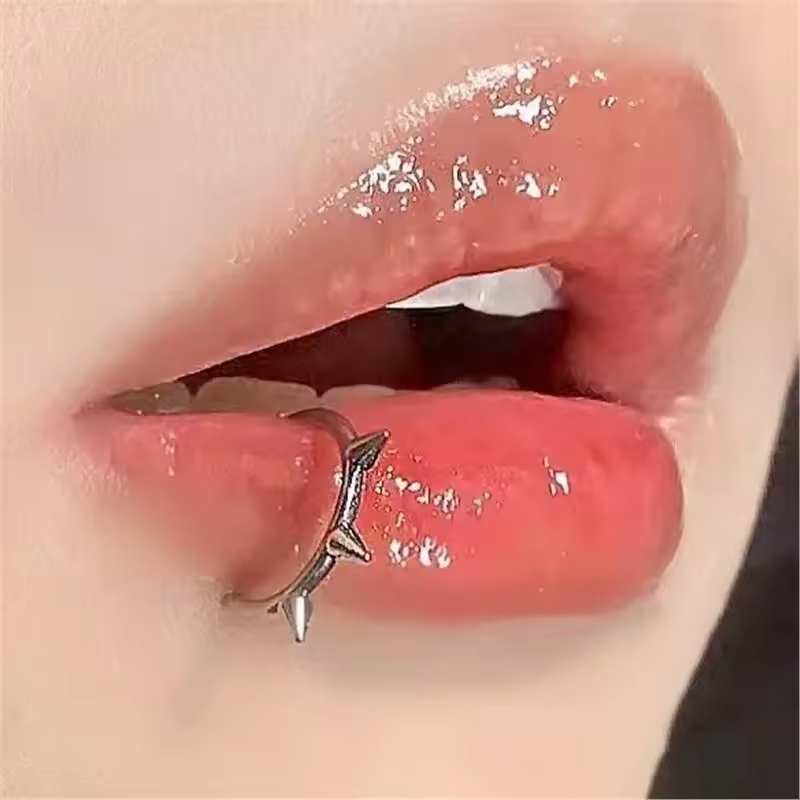
Today, lip ring jewelry thrives on innovation, featuring customizable engravings, LED accents, and eco-friendly options. Whether for a permanent piercing or temporary flair, it symbolizes individuality while demanding mindful choices in quality and maintenance. This guide explores every facet of the trend, empowering you to embrace it confidently and stylishly.
The History and Cultural Significance of Lip Ring Jewelry
The use of lip ring jewelry dates back centuries, with roots in indigenous cultures across Africa, South America, and the Pacific Islands. For example, the Mursi people of Ethiopia traditionally wore large lip plates as symbols of beauty and status, while the Nuba people of Sudan used similar adornments to denote social standing. In modern times, lip ring jewelry has evolved from these cultural practices into a mainstream fashion staple.
Cultural vs. Modern Trends
- Historical Context: Many ancient lip piercings were tied to rites of passage or marital traditions. For instance, some Amazonian tribes viewed lip discs as markers of adulthood and fertility.
- Modern Interpretation: Today’s lip ring jewelry prioritizes aesthetics and personal expression over cultural symbolism, though some designers respectfully reinterpret traditional motifs.
- Global Influence: Cross-cultural appreciation has led to hybrid designs, blending heritage elements—like Mursi-inspired geometric patterns—with contemporary minimalist styles.
This evolution highlights how lip ring jewelry bridges heritage and innovation, making it a timeless choice for fashion-forward individuals.
Materials Used in Lip Ring Jewelry
The choice of material for lip ring jewelry is critical, as the mouth is a high-moisture, high-bacteria environment. Poor-quality metals can cause infections or allergic reactions. The most common materials include:
- Surgical Stainless Steel: Affordable and hypoallergenic, ideal for beginners. This material resists corrosion and tarnish, making it durable for daily wear. However, it may leave slight marks on teeth over time.
- Titanium: Lightweight and corrosion-resistant, offering a sleek finish. Grade 2 or 23 titanium is preferred for its biocompatibility, and anodized colors provide aesthetic options without compromising safety.
- 14k or 18k Gold: Luxurious and durable, though pricier. Gold is hypoallergenic and tarnish-resistant, making it a premium choice for those with sensitive skin.
- Plastic and Delrin: Cost-effective options for temporary wear. Delrin is preferred over acrylic due to its durability and resistance to cracking, ideal for surface bars or non-permanent piercings.
- Platinum and Cobalt Chrome: High-end choices for allergy-prone individuals. Platinum is inert and sleek, while cobalt chrome offers extreme durability but may be less common.
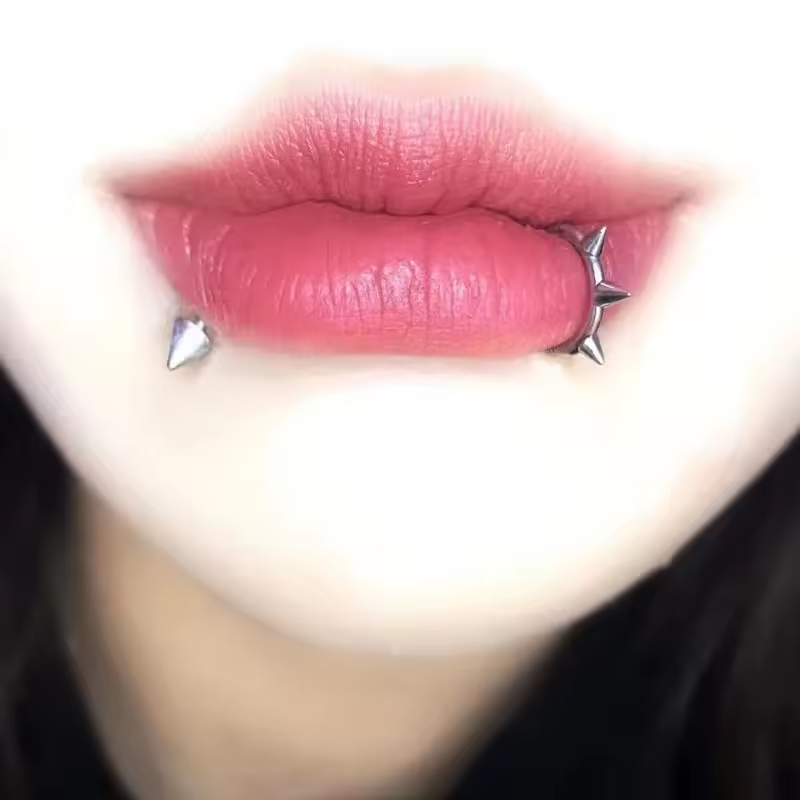
Emerging Trends in Material Innovation
- Bio-Compatible Ceramics: Some brands now use ceramic coatings for hypoallergenic, glass-like finishes that mimic gemstones without metal allergies.
- Eco-Friendly Options: Recycled metals and plant-based plastics (e.g., bio-resin) reduce environmental impact while maintaining functionality.
- Gemstone and Crystal Accents: Natural stones like diamonds or sapphires add luxury, though they require extra care to avoid chipping.
Avoid nickel or plated metals, as they can irritate sensitive skin. Additionally, consider your lifestyle: active individuals may prefer titanium’s strength, while those seeking elegance might opt for gold. Always prioritize materials labeled “implant-grade” for long-term piercings to ensure safety and longevity.
Exploring Lip Ring Jewelry Styles
Lip ring jewelry comes in diverse styles to suit any aesthetic:
Labret Studs
These small, flat-back gems are inserted directly into the lip, often near the center. They’re discreet yet impactful, making them a favorite for subtle statements. Options range from classic clear crystals to bold colored gems or engraved designs.
Vertical Lip Rings
Mounted on a curved barbell, these pieces sit vertically, creating a dramatic effect. They’re best suited for healed piercings due to their size. Variations include floral-shaped tops or interchangeable ends for mixed-and-matched looks.
Surface Bars
These minimalist bars rest on the skin’s surface, eliminating the need for a full piercing. Perfect for temporary flair or testing the trend without permanent commitment. They come in sleek straight or curved designs, often with delicate gemstone accents.
Emerging Styles & Customization
- Dermal Anchors: Ideal for those seeking a raised, geometric look without a visible back. Popular in industrial or tribal-inspired designs.
- LED-Embedded Options: Glow-in-the-dark or battery-powered lights create futuristic, eye-catching effects.
- Textured or Engraved Surfaces: Matte finishes, hammered textures, or engraved initials add personalization without sacrificing durability.
Whether you prefer understated elegance or avant-garde flair, lip ring jewelry styles adapt to every expression—from subtle everyday wear to bold, statement-making pieces.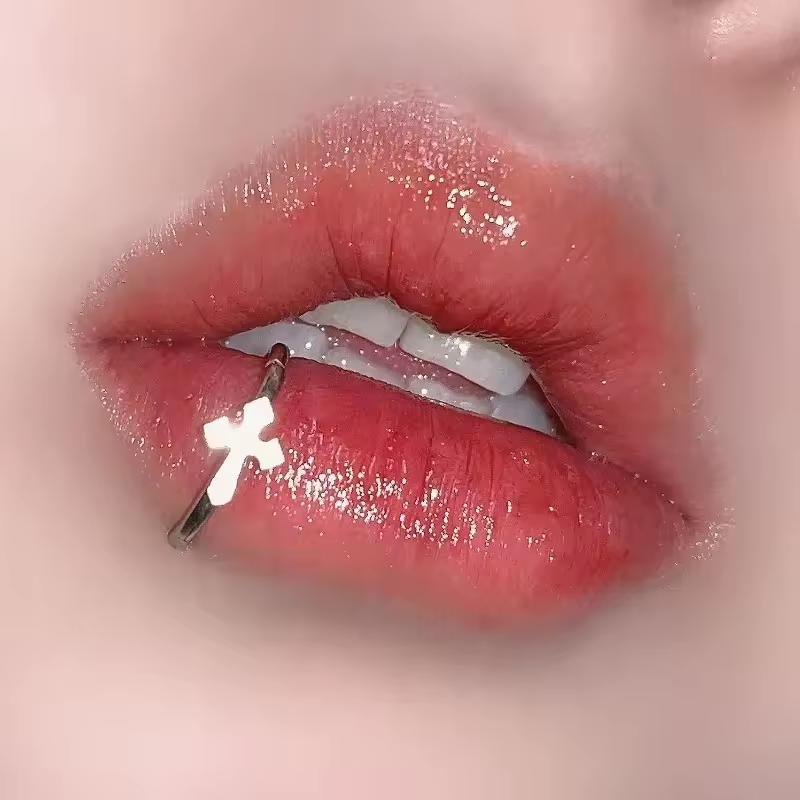
Choosing the Perfect Lip Ring Jewelry
Selecting the right lip ring jewelry involves considering your piercing type, skin tone, and lifestyle:
- Piercing Depth: Ensure the jewelry’s length accommodates your lip’s thickness to avoid discomfort. For example, a labret stud for a thin upper lip might need a shorter post (2–3mm), while a thicker lower lip may require 4–6mm.
- Personal Style: Match the jewelry’s design to your wardrobe. Bold colors suit edgy looks, while neutral tones pair well with professional attire.
- Comfort: Opt for smooth edges and rounded ends to prevent irritation.
Advanced Tips for Perfect Fit
- Face Shape Considerations:
- Round faces: Thin, straight bars or small studs balance proportions.
- Square faces: Curved designs or gemstone accents soften angular features.
- Heart-shaped faces: Centered labrets draw attention downward.
- Color Coordination:
- Cool-toned skin (pink/blue undertones): Silver, rose gold, or clear crystals enhance brightness.
- Warm-toned skin (golden/yellow undertones): Gold or bronze hues complement naturally.
- Professional Consultation:
- Bring reference photos to your piercing appointment. A specialist can advise on proportions and placement.
- Discuss healing jewelry vs. permanent pieces—many start with basic steel and upgrade later.
Caring for Your Lip Ring Jewelry
Proper maintenance prolongs the life of your lip ring jewelry and ensures your piercing heals correctly. Follow these steps:
- Daily Cleaning: Use saline solution or a mild antimicrobial soap to clean the area twice daily. Gently wipe around the jewelry with a sterile cloth.
- Avoid Touching: Minimize contact with unwashed hands to reduce infection risks. Germs from phones, makeup brushes, or door handles can easily transfer.
- Regular Sanitization: Soak the jewelry in a solution of warm water and sea salt for 5–10 minutes daily. For stubborn buildup, use a soft toothbrush to gently scrub the post.
Advanced Care Strategies
- Material-Specific Tips:
- Titanium/Gold: Use a jewelry polishing cloth to restore shine without harsh chemicals.
- Gemstones: Avoid abrasive cleaners that scratch delicate surfaces.
- Plastic/Delrin: Hand-wash only—boiling or chemical dips may warp the material.
- Dietary Precautions:
- Steer clear of sticky candies, chewy breads, or acidic drinks (e.g., citrus, soda) during healing—they can trap bacteria or loosen jewelry.
- Travel Prep: Pack a portable saline spray and alcohol-free wipes for on-the-go touch-ups. Avoid swimming in pools/hot tubs until fully healed.
Troubleshooting Common Issues
- Discoloration: Yellowing under titanium jewelry? This is normal (skin oils, not infection)—increase cleaning frequency.
- Loose Jewelry: If the ball end feels loose, tighten it daily with clean hands. A slightly snug fit prevents migration.
- Temporary Swelling: Post-piercing puffiness? Apply a cold compress and avoid alcohol for 24–48 hours.
Never remove the jewelry during the healing phase (6–8 weeks), as this risks closing the piercing. If irritation persists, consult a piercer or dermatologist immediately.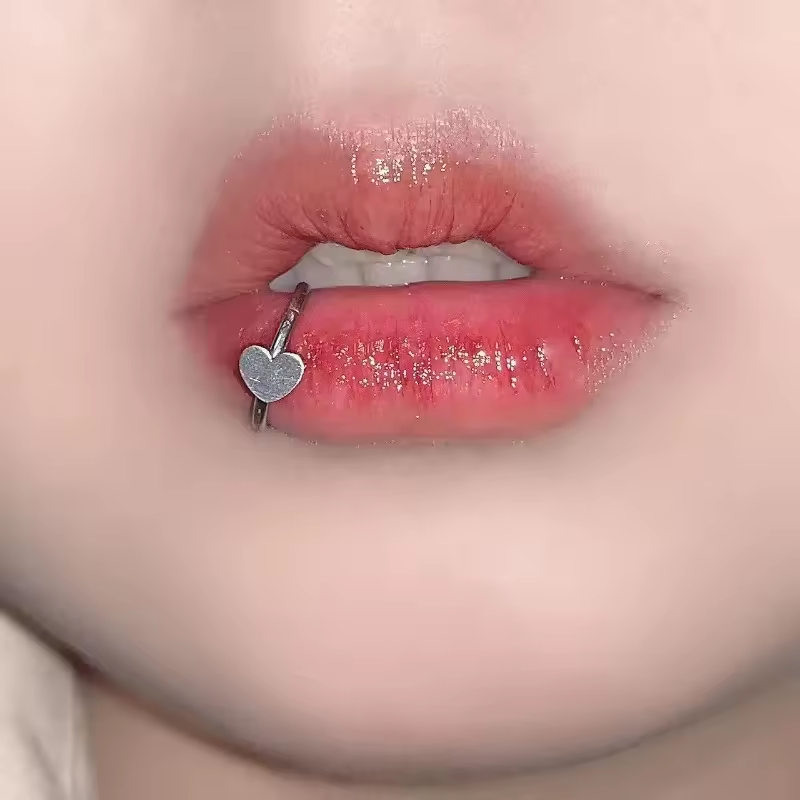
Safety Tips for Lip Piercing and Jewelry
While lip ring jewelry is safe when handled properly, risks exist:
- Infection Prevention: Follow aftercare instructions rigorously. Redness, swelling, or pus indicate potential infection. Seek professional help if symptoms persist beyond 48 hours.
- Professional Piercing: Always visit a licensed studio with sterilized tools. Ask to see their autoclave certification and check if they use single-use needles.
- Adjustments: Never force the jewelry to move; consult a piercer for resizing. Tugging it out of alignment can cause trauma or scarring.
Enhanced Safety Protocols
- Post-Piercing Diet: For the first 24–48 hours, stick to soft foods and lukewarm drinks. Avoid crunchy snacks (e.g., chips) that might snag the jewelry.
- Oral Hygiene Routine:
- Brush teeth twice daily with a soft-bristled toothbrush to prevent plaque buildup near the jewelry.
- Use an alcohol-free, antimicrobial mouthwash (avoid hydrogen peroxide, which dries skin).
- Avoid Chemical Exposure:
- Skip lip balms, glosses, or tints during the first week to let skin breathe.
- Remove jewelry before using whitening toothpaste (strong abrasives may irritate fresh piercings).
Emergency Scenarios & Solutions
- Jewelry Migration: If the piece shifts position, resist the urge to adjust it yourself. Schedule an appointment with your piercer for gentle realignment.
- Accidental Removal: If the jewelry falls out during healing, rinse it with saline, disinfect your hands, and reinsert it immediately to prevent the piercing from closing.
- Allergic Reactions: If you develop itching, hives, or severe swelling, remove the jewelry and seek medical advice. Hypoallergenic options like titanium may be necessary.
Remember, healing takes 6–8 weeks. Avoid removing the jewelry during this period to prevent closure. Trust professionals for adjustments and always prioritize hygiene over aesthetics during recovery.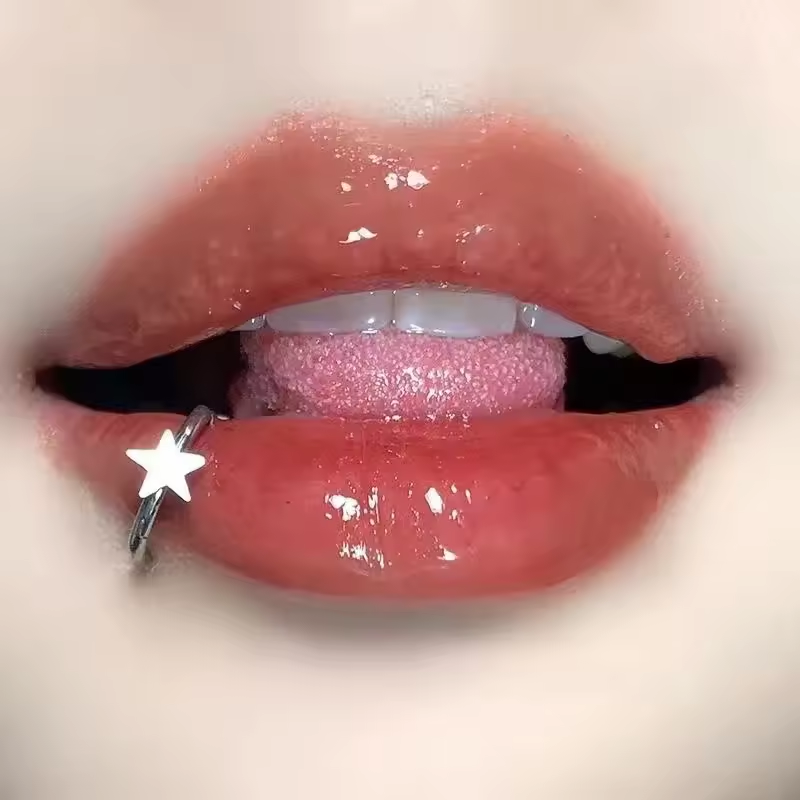
Trends and Innovations in Lip Ring Jewelry
The lip ring jewelry market is booming with creative trends:
- Custom Engravings: Personalized initials or symbols add a unique touch. Laser-engraved patterns or micro-etched designs are now available for intimate messages.
- LED Inserts: Glow-in-the-dark or battery-powered lights create a futuristic vibe. Some models sync with smartphones for color-changing effects.
- Sustainable Options: Eco-friendly materials like recycled titanium or biodegradable plastics are gaining traction. Brands now offer carbon-neutral shipping and take-back programs for old jewelry.
Emerging Tech & Sustainability
- Smart Jewelry: Experimental designs include health sensors that track stress levels or UV exposure, displayed via LED colors.
- 3D-Printed Customization: Tailored geometries and intricate patterns are now achievable through additive manufacturing, enabling one-of-a-kind pieces.
As technology advances, expect smart features and ethical practices to redefine lip ring jewelry, blending innovation with responsibility.
